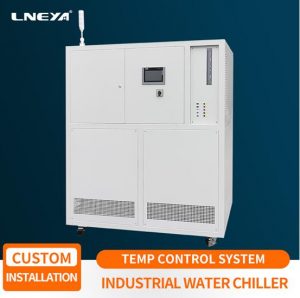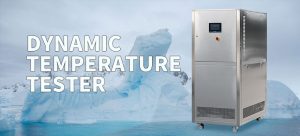Temperature Control Soultion for Wafer Cleaning Solution in Semiconductor Industry
With the rapid development of semiconductor technology, the requirements for wafers are getting higher and higher, making clean wafer surfaces more and more important for the manufacturing of semiconductor devices. In the wafer manufacturing process, cleaning is required after each step of the process.
At present, the wafer cleaning and etching methods often need to set up a large number of spraying structures to spray different chemical solutions to the wafer surface for cleaning and etching, which leads to low space utilization rate. Moreover, due to the instability of the cleaning solution temperature, it is not easy to produce stable high-temperature chemical etching reaction on the wafer surface, which will greatly weaken the etching effect.
Remove exposed areas using a wet chemical etching process. The remaining photoresist mask is then transferred to the lower layer using, for example, a dry etching process. The grooves generated in the material are then filled with non-conductive materials (mainly oxides). The oxide protrusions must then be precisely removed to expose the contact surfaces again for further treatment. Next is the next layer.
The temperature of the etching bath plays a central role in the semiconductor industry. The minimum temperature deviation of the etching bath may have caused disastrous consequences and made the whole batch of wafers unusable. Therefore, only high-precision and fail safe temperature control systems can be used in wet chemical treatment. They must be able to accurately maintain the temperature within the target range and react quickly to temperature deviations. In addition, they must quickly restore the correct temperature of the etching bath when replacing the etching solution to ensure a stable production process.
Precise temperature control for many processes in semiconductor production. In an almost infinite number of single steps, extremely thin layers are applied, partially covered, and uncovered parts are removed with absolute precision. The etching bath must be kept within the optimum temperature range to maintain a constant and predictable etching rate in a wet chemical process. This requires the use of absolutely accurate and reliable temperature control solutions that are ideally calibrated for their respective applications.
A perfectly balanced temperature control system can not only improve production results, but also improve process reliability and reduce production time, cost and maintenance. Our experienced and well-trained expert team in the field of process temperature control in the semiconductor industry will be happy to answer your questions. Of course, if necessary, we will adjust our temperature control solution according to your personal needs.
Our semiconductor test cooling system TES-Reihe has a temperature control range of – 85 ℃~200 ℃, which is used to cool and heat up with the test bench. Specific models and parameters can be found on the product page.
Verwandte Empfehlungen
-
What are the characteristics of the pressure of industrial water chillers
1807Industrial water chillers are one of themost popular equipment in the machinery and equipment industry. For thisreason, the editor of LNEYA specially compiled relevant pressure instructionsto help everyone better understand industrial water chi...
Details anzeigen -
Kühlung, Heizung und Temperaturregelung in einem hydrothermalen Reaktor
1397Das Kühl-Heizungs-Temperaturregelungssystem kann in einer Vielzahl von Reaktoren, Reaktoren und Destillationsanlagen eingesetzt werden. Heute werden wir analysieren, worauf Sie bei der Anwendung in einem hydrothermalen Reaktor achten müssen.
Details anzeigen -
Description of Selection of Air-cooled Cryogenic Chiller
1838Many users struggle with the problems of air-cooled cryogenic chillers and water cooled cryogenic chillers. However, enterprises should make choices according to their actual environment. For this reason, Wuxi Guanya professional manufacturer has ...
Details anzeigen -
Ultra Low Temp Chiller Compressor Allgemeine Schutzanweisungen
1406Der Verdichter einer Ultra-Niedrigtemperatur-Kältemaschine ist ein relativ wichtiger Bestandteil aller seiner Komponenten. Während des Betriebs sind bestimmte Schutzvorrichtungen erforderlich, damit der Verdichter sicher arbeiten kann. Welcher spezifische Schutz? Schauen wir es uns an! Die m...
Details anzeigen
 LNEYA Industriekühler Hersteller Lieferant
LNEYA Industriekühler Hersteller Lieferant












